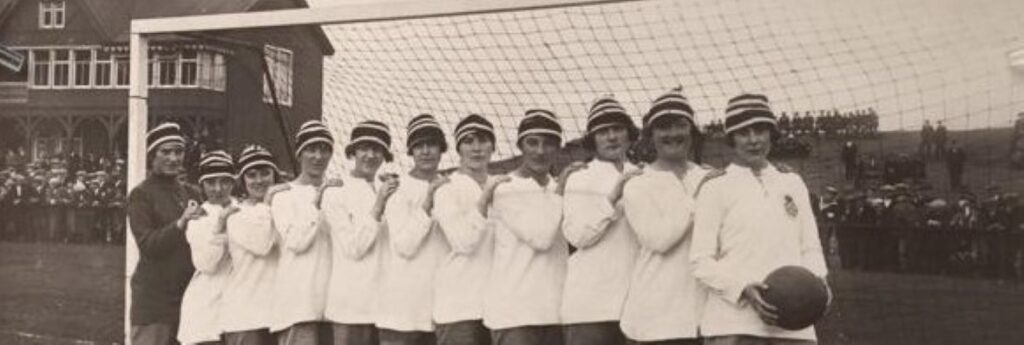As Canada’s women’s soccer team blazes its own trail, going for Olympic gold against Sweden, imagine what Lily Parr, might have thought. The only inaugural female inductee into the National Football Museum in Manchester, Parr was a pioneer of the women’s game whose record-setting career was overlooked when the bosses of English soccer shunned the women’s game as “unsuitable for females.”
Parr is now the focus of a new permanent exhibition at the museum marking the 100th anniversary of the English Football Association’s decision to ban women from playing matches at the stadiums of Football League clubs – a ruling that wasn’t lifted until 1971.
“The display tells of the girls’ defiance to play the game they loved while the powers-that-be tried to ban them,” says Belinda Scarlett, curator of women’s soccer. “Lily is one of the most important figures in world football but is far from a household name. We hope to redress that balance with fresh attention on the women who defied the ban and inspired future generations of girls to play football.”
The exhibition features previously unseen photographs from the 1930s that belonged to Lizzy Ashcroft, a friend and teammate of Parr’s. Ashcroft’s grandson found the photos in a suitcase in the loft of a relative’s house and donated them to the museum.
Women’s football in England dates to the 1890s, but it ballooned in popularity during World War I when women flooded into munitions factories as men were called up to fight. Many of the factories, including Dick, Kerr & Co., created women’s teams that played games to raise money for charity.
Parr joined Dick Kerr Ladies, the top women’s team in England, as a teenager and starred in a game on Dec. 26, 1920, that drew 53,000 spectators to Goodison Park in Liverpool. She played for the club, later renamed Preston Ladies, until she retired in 1951 at the age of 46 and scored almost 1,000 goals during a remarkable 32-year career.
After working at the munitions factory during the war, Parr trained as a nurse. She died in 1978 and was inducted into the English Football Hall of fame in 2002.
National Football Museum
Now open again, the National Football Museum, which includes the Hall of Fame, explores the game’s origins, relives FA Cup fairy tales, and illustrates how football is such an integral part of British culture.
The museum houses the country’s footballing crown jewels: the ball from the 1966 World Cup Final, Geoff Hurst’s iconic shirt, and the replica Jules Rimet Trophy. Besides women’s football, there is also a display on the Euros” football tournament, which concluded earlier this summer.
And visitors can take part in a host of fun interactive challenges, from penalty-taking and shot-stopping to match commentary.
Two tours – a museum highlights – and an English Football Hall of Fame exhibition tour – take place daily.

